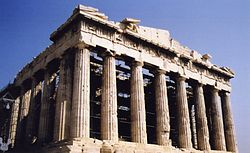- A brief account of the history of logic, from the The Oxford Companion to Philosophy (edited by Ted Honderich), OUP 1997, 497-500.
- A biography of Peter Abelard, published in the Dictionary of Literary Biography Vol. 115, edited by Jeremiah Hackett, Detroit: Gale Publishing, 3-15.
- Philosophy in the Latin Christian West, 750-1050, in A Companion to Philosophy in the Middle Ages, edited by Jorge Gracia and Tim Noone, Blackwell 2003, 32-35.
- Ockham wielding his razor!
- Review of The Beatles Anthology, Chronicle Books 2000 (367pp).
- A brief discussion note about Susan James, Passion and Action: The Emotions in Seventeenth-Century Philosophy.
- Review of St. Thomas Aquinas by Ralph McInerny, University of Notre Dame Press 1982 (172pp). From International Philosophical Quarterly23 (1983), 227-229.
- Review of William Heytesbury on Maxima and Minima by John Longeway, D.Reidel 1984 (x+201pp). From The Philosophical Review 96 (1987), 146-149.
- Review of That Most Subtle Question by D. P. Henry, Manchester University Press 1984 (xviii+337pp). From The Philosophical Review 96 (1987), 149-152.
- Review of Introduction to the Problem of Individuation in the Early Middle Ages by Jorge Gracia, Catholic University of America Press 1984 (303pp). From The Philosophical Review 97 (1988), 564-567.
- Review of Introduction to Medieval Logic by Alexander Broadie, OUP 1987 (vi+150pp). From The Philosophical Review 99 (1990), 299-302.
Tuesday, January 5, 2010
Tractatus : The seven basic propositions.
The Tractatus's structure purports to be representative of its internal essence. It is constructed around seven basic propositions :
a.Ogden translation
b.Pears/McGuinness translation
1.
a.The world is everything that is the case.
b.The world is all that is the case.
2.
a.What is the case, the fact, is the existence of atomic facts.
b.What is the case — a fact — is the existence of states of affairs.
3.
a.The logical picture of the facts is the thought.
b.A logical picture of facts is a thought.
4.
a.The thought is the significant proposition.
b.A thought is a proposition with sense.
5.
a.Propositions are truth-functions of elementary propositions.
b.A proposition is a truth-function of elementary propositions.
a.(An elementary proposition is a truth function of itself.)
b.(An elementary proposition is a truth function of itself.)
6.
a.The general form of truth-function is [p, ξ, N(ξ)].
a.This is the general form of proposition.
b.The general form of a truth-function is [p, ξ, N(ξ)].
b.This is the general form of a proposition.
7.
a.Whereof one cannot speak, thereof one must be silent.
b.What we cannot speak about we must pass over in silence.
a.Ogden translation
b.Pears/McGuinness translation
1.
a.The world is everything that is the case.
b.The world is all that is the case.
2.
a.What is the case, the fact, is the existence of atomic facts.
b.What is the case — a fact — is the existence of states of affairs.
3.
a.The logical picture of the facts is the thought.
b.A logical picture of facts is a thought.
4.
a.The thought is the significant proposition.
b.A thought is a proposition with sense.
5.
a.Propositions are truth-functions of elementary propositions.
b.A proposition is a truth-function of elementary propositions.
a.(An elementary proposition is a truth function of itself.)
b.(An elementary proposition is a truth function of itself.)
6.
a.The general form of truth-function is [p, ξ, N(ξ)].
a.This is the general form of proposition.
b.The general form of a truth-function is [p, ξ, N(ξ)].
b.This is the general form of a proposition.
7.
a.Whereof one cannot speak, thereof one must be silent.
b.What we cannot speak about we must pass over in silence.
Subscribe to:
Post Comments (Atom)





No comments:
Post a Comment